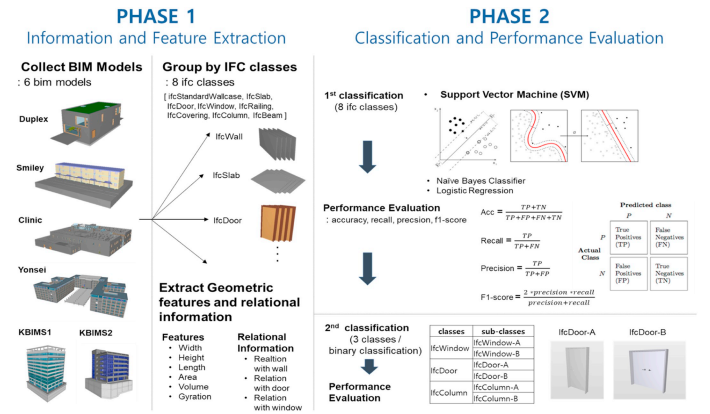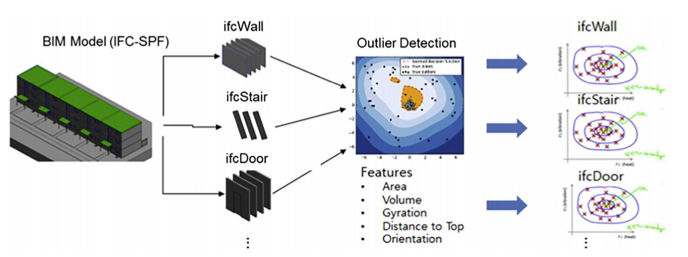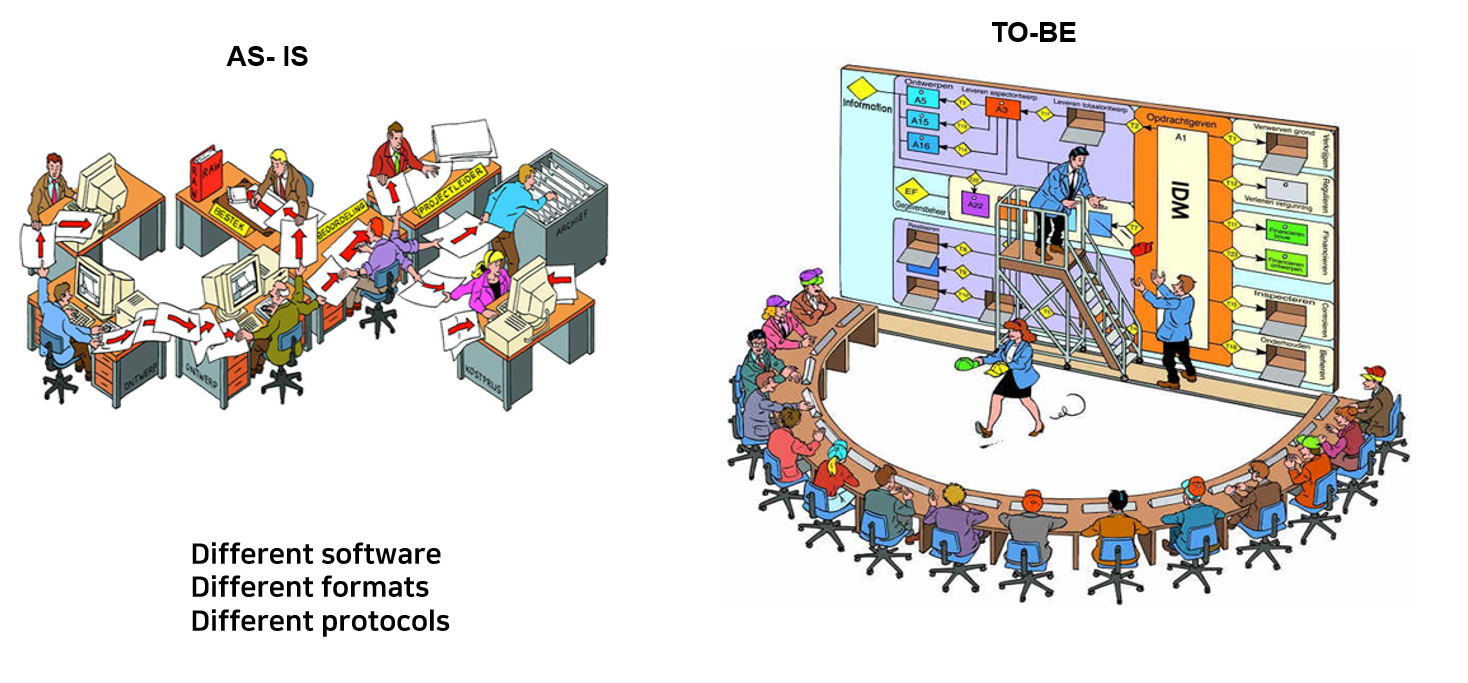|
Building information modeling shares and manages all the information that occurs during the life cycle of a
construction project based on a three-dimensional object-oriented model beyond the ordinary secondary drawing and specification. It finds various interferences and mismatch problems previously occurring in the design stage to improve
design quality and secure constructability and promote smooth project management between construction types.
The introduction of BIM is a global trend, and major overseas countries actively utilize BIM-based design. Even in Korea, it is obligated to apply
BIM to more than 50 billion facilities in investment fields from 2020. With the rise of the 4th industrial revolution, it is regarded as a basic technology of applying Artificial Intelligence (AI), Drones, Virtual Reality (VR), and 3D printing technologies to the construction field.
|
|
 Using support vector machines to classify building elements for checking the semantic integrity of building information models Using support vector machines to classify building elements for checking the semantic integrity of building information models
The Industry Foundation Classes
(IFC), an open and neutral ISO standard, plays a key role in enabling interoperability, allowing entity and relationship data to be exchanged seamlessly between Building Information
Modeling (BIM) applications. However, due to the lack of formal rigidity, data exchanges can often be arbitrary
and susceptible to errors, omissions and misrepresentations. This research applied support vector machines
(SVM), a technique of machine learning, to check the semantic integrity of mappings between BIM elements and
IFC classes.
The SVM was trained to distinguish model elements from a dataset of 4187 unique elements collected from six architectural BIM models, based on their geometric and relational features. Using a two
staged
approach, the SVM was first tested to classify the elements with respect to eight IFC classes. Secondly, the SVM
was further tested to distinguish between the element subtypes within individual IFC classes. Results of high
accuracy (ACC) and F1 scores in both stages attested to the power and generality of the algorithm. The developed
approach provides a way to verify BIM models for data consistency, as well as add semantics required for
domain-specific analysis. Practically, the approach is envisioned to be of value for automating the quality checks
of BIM deliverables, which is still largely a manual process.

|
|
 Applying novelty detection to identify model element to IFC class
misclassifications on architectural and infrastructure Building Information Models Applying novelty detection to identify model element to IFC class
misclassifications on architectural and infrastructure Building Information Models
Ensuring the correct mapping of model elements to Industry
Foundation Classes (IFC) classes is fundamental for the seamless exchange of information between Building Information Modeling (BIM) applications, and thus achieve true interoperability. This research explored the possibility of
employing novelty
detection, a machine learning approach, as a way to detect potential misclassifications that occur during
current ad hoc and manual mapping practices. By training the algorithm to learn the geometry of BIM
elements for a given IFC class, outliers are detected automatically. A framework for leveraging multiple
BIM models and training individual one-class SVM’s was formulated and tested on four IFC classes.
Performance results demonstrate the classification models to be robust and unbiased. The algorithms
developed thus can be leveraged to check the integrity of IFC data, a prerequisite for BIM-based quality
control and code compliance.

|





